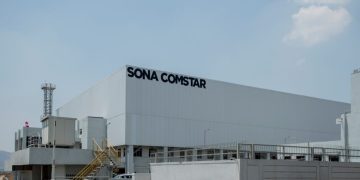Collision repair is facing many challenges as the business continues to grow in complexity. For this reason, it is essential to find ways to improve the business profitability.
Surface preparation and paint application are two critical steps of the paint process that significantly impact the quality and efficiency of the whole process.
We will go through some key factors that can contribute to achieve a high-quality finish whilst improving the efficiency of the process. Whether you’re a seasoned professional or just starting in the automotive refinishing business, the insights in this article will help you achieve better results and boost your shop’s productivity and efficiency.
- Use the Right Tools and Equipment: They are essential for an effective surface preparation and paint application. Use high-quality sandpapers, sanding machines, spray guns and paint booths as they are more reliable, efficient, and less likely to break down or require frequent maintenance. Using the right tools not only helps to speed up the process but also ensures that the surface is properly prepped, and the paint is evenly applied.
- Implement Standardised Processes: This is the best way to guarantee consistency as it improves quality and reduces errors. Standardised processes also improve efficiency by streamlining procedures and eliminating unnecessary steps. Standardised processes also help to enhance the reputation of the collision centre by building a positive reputation within the industry and attracting more customers.
- Proper Surface Preparation: Surface preparation is a crucial step in order to achieve a high-quality paint finish. In fact, it is considered the most critical step in the entire process because the quality of the final finish directly depends on proper preparation. Identifying the substrate (aluminium, steel, composite, etc.), choosing the correct abrasive and using the right sanding techniques are key factors to guarantee a smooth and high-quality finishing surface. It is important to note that the number of vehicles with aluminium enclosures keeps quickly growing across all global markets and they represent important challenges regarding steel vehicles. Avoiding cross-contamination in aluminium vehicles is a must, not only in the “clean room” area, but also in the prep. area. For this reason, it is important to use materials like abrasives specifically designed for aluminium in order to avoid cross-contamination with heavy metals that are normally present in regular abrasives.
- Proper Paint Spray Techniques: It helps to reduce the amount of overspray and minimise the amount of paint needed for each job. Using the correct air pressure, spray gun setting, maintaining the correct distance from the surface being painted and using efficient spray patterns are key features to a correct paint application.
- Provide the Right Training: Training, the right one, is essential for ensuring that all technicians are using the correct techniques and equipment to achieve a high-quality finish. Providing ongoing training and education can help to improve efficiency and reduce the amount of rework required.
- Follow Manufacturer’s Instructions: Always follow the manufacturer’s instructions when it comes to mixing, application, and curing times. Improper mixing or application can affect the final finish, while failing to allow proper curing times can lead to adhesion issues.
- Continuous Improvement: implementing “Lean Manufacturing Principles” can help to identify areas for improvement in the paint application process. This can include reducing waste, improving process flow, and optimising resources in order to increase both productivity and efficiency that may lead to costs reduction.

Leonardo Gómez
Business Sector Manager Global
Automotive Refinishing
Mirka Ltd



























































